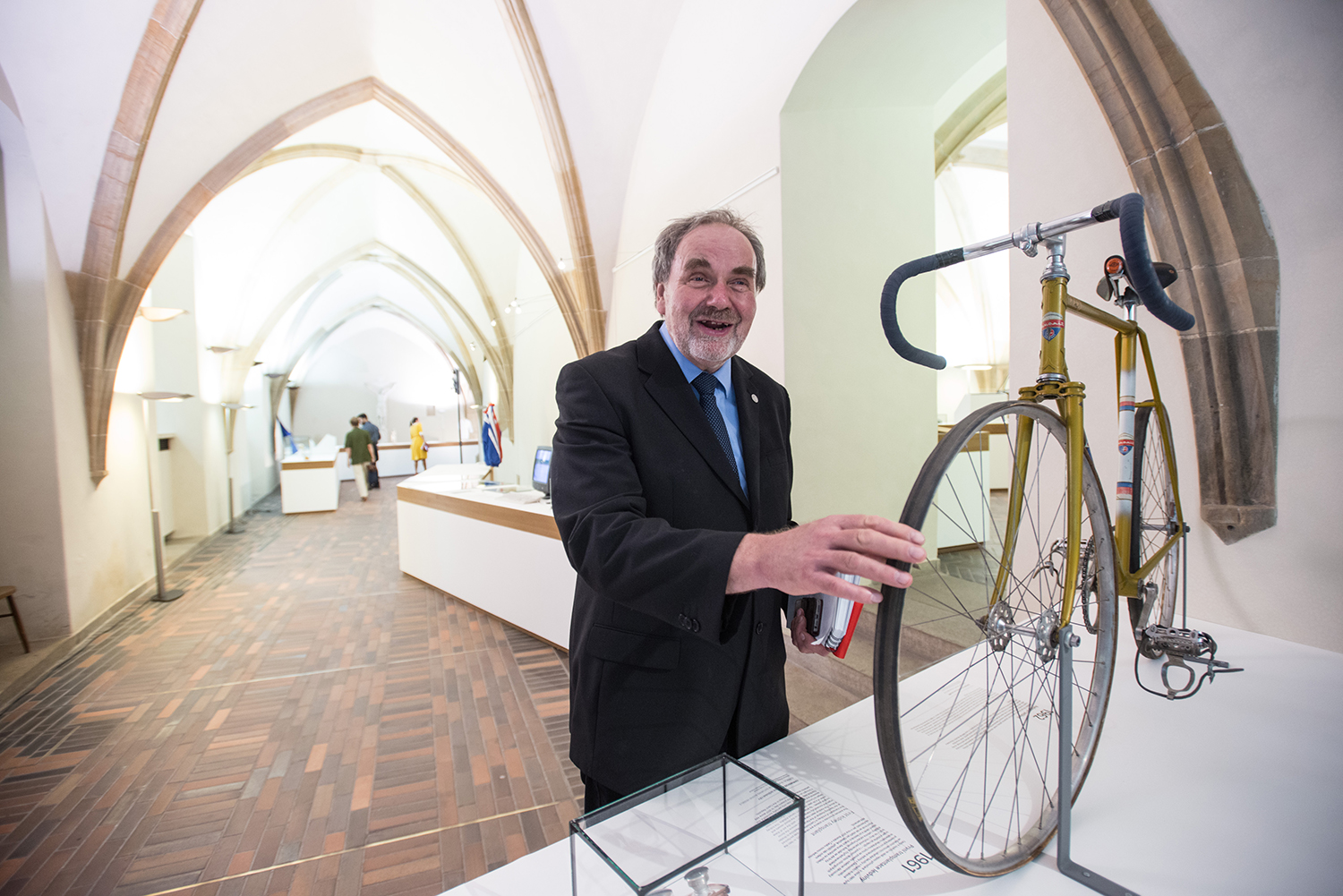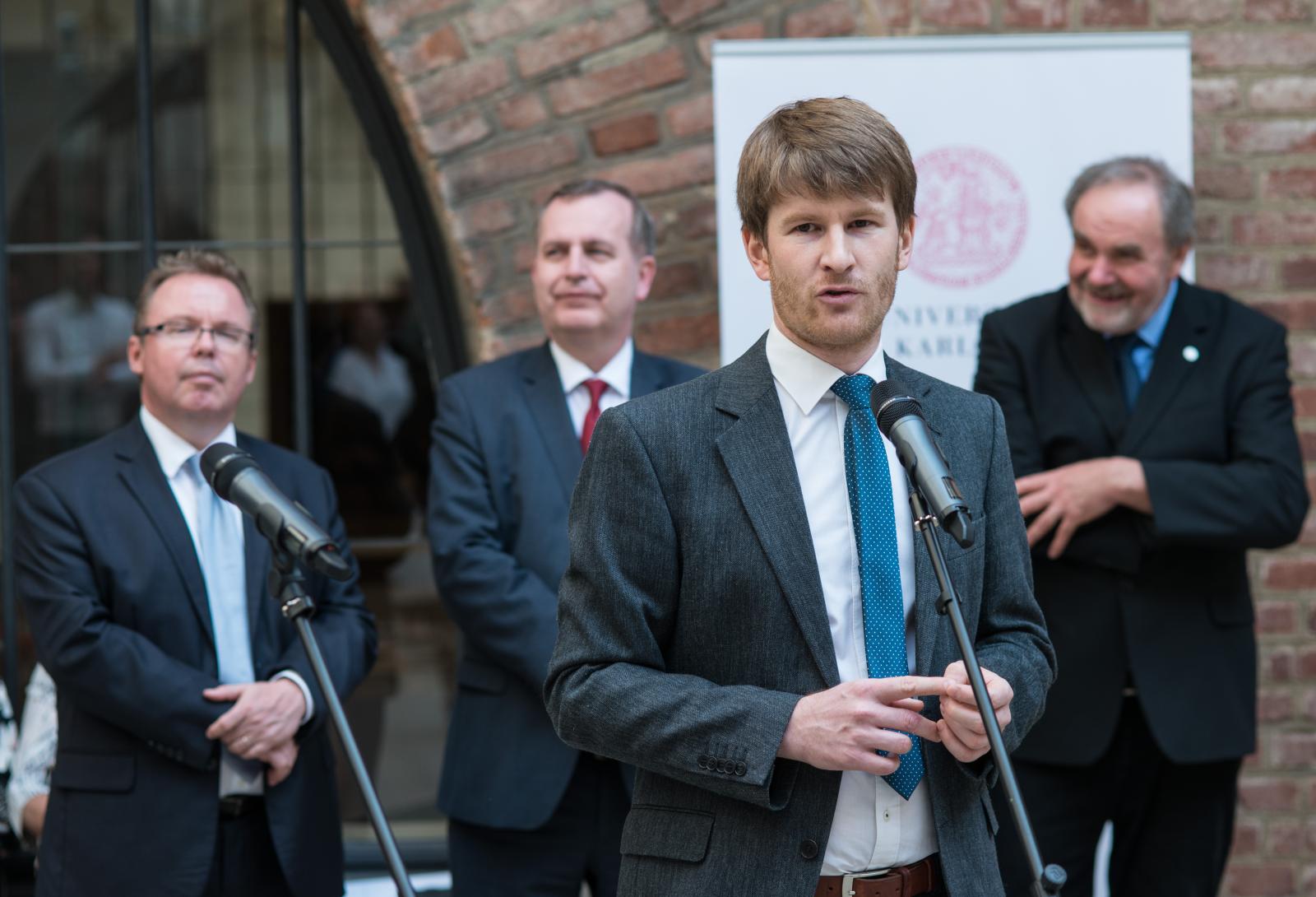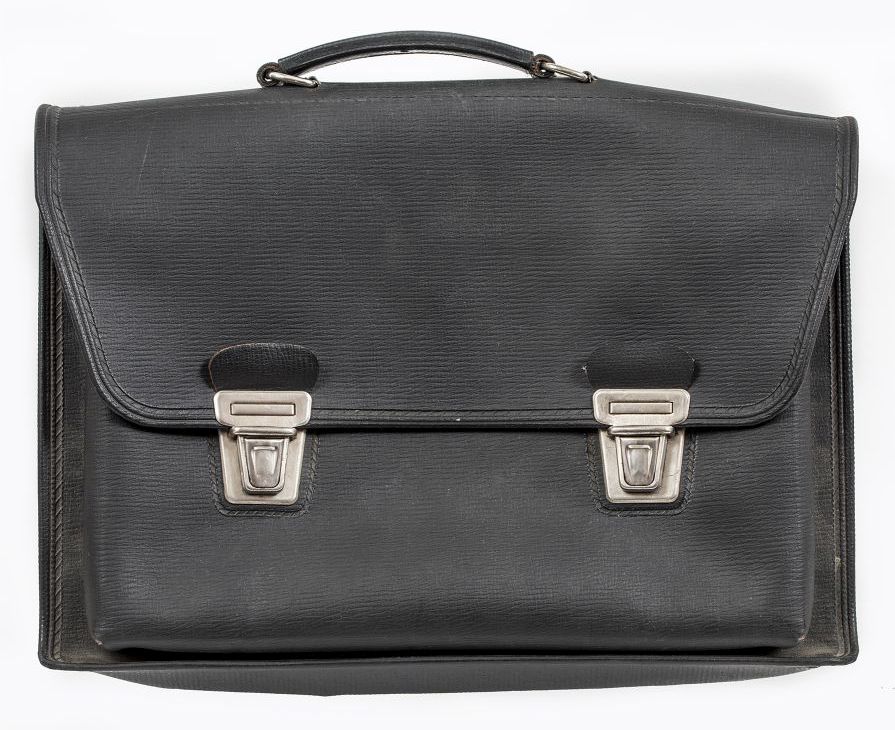By Jan Velinger
12 June 2018
|
The history of this country, like most of central Europe, was often turbulent, not least at key points in the 20th century. Czech or Czechoslovak history has often been referred to as a history of “eights” because you have the founding of the country in 1918, the Munich Agreement in 1938, the Communist putsch in 1948, the Soviet-led invasion that crushed the Prague Spring and so on. How hard was it to settle on just one object per year and, second, how did you balance between monumental years and years when seemingly little happened?
“From the outset, I decided that I would give each year equal importance. I made the choice not to overemphasize the famous ‘eights’. As a result, visitors of the show can see a rather curious object representing 1968: a mask, which students brought back with them from Africa where they had been providing humanitarian assistance. Of course, 1968 is best known for the invasion and the political upheaval which followed, but I tried to offer a different view on the year and, again, to treat each year equally.
“Some years it was quite easy to find relevant objects to exhibit and there was plenty to choose from; but other years were more difficult and required a bit of research. No one remembers what happened in 1974, for example, or in 1981!
“In some cases, many hours were spent in the library or online searching for a suitable item.”
Did you choose all of the objects on your own or was it a collaborative effort?
“I asked all 17 faculties at Charles University for help, asking for information about their most important scientists and books published and so on. I got answers from most of them and that was the first step. I was also teaching a seminar in which students helped me come up with potential items. By the end though, the choice on what would be in the final collection was up to me.”
Were you yourself surprised during research and the selection process?
“I was surprised many times. I am an historian but covering all the faculties was intense. I got a lot of inspiration, for example, from the Faculty of Medicine or the Natural Sciences. One surprising object dates back to 1979 and it is a vaccination pistol that was used to eradicate smallpox in villages in Somalia.
“There is also a motorcycle helmet from 1957 when a doctor from the Faculty of Medicine in Plzeň proposed that they should be worn by all motorcycle riders. He put toward the idea and the idea was adopted by the government. So those are two examples of how faculty members at Charles University made a difference.”
To go back to what you said, I remember reading about the leading epidemiologist, Zdeněk Ježek, who was the leader of the WHO team that announced in 1980 that smallpox had been eradicated. Smallpox was of course a terrible, terrible disease and if I am not mistaken two final samples of the virus have been stored in deep-freeze at the CDC in Atlanta and at a facility in Russia. He was involved in the eradication and that was a monumental feat.
“That’s right.”
One of the things that is readily apparent, and which comes to the fore in the show, is just how many key moments or developments are connected with the history of Charles University itself: many changes were instigated by either professors, or students or both.
“When it comes to students, there are, for example, two bags in the show: one belonged to Jan Palach, the student at the Faculty of Arts who set himself alight in 1969 to protest against the Soviet occupation, and the second bag dates back to 1989 and the start of the Velvet Revolution. It belonged to Martin Klíma, who was the leader of independent students. He brought his speech in the same bag to the demonstration at Albertov in Prague.
“So we have 1969 and 1989: two moments where students influenced the history of the country a lot.
“Then it bears saying that, from a certain standpoint, the importance of Charles University was even greater during Czechoslovakia’s First Republic. Many, many important alumni, from leading Czech politicians and members of government to the heads of major institutions at that time were, not surprisingly, former alumni.”
It strikes me as a viewer that there is a good ‘ebb and flow’ to the exhibition. Even though you treat each year the same, as you said, some objects are ‘heavier’ in terms of their overall significance. What are some of the ‘lighter’ things that visitors can see here?
“One might be the fictional creature called the ‘ropák’ (or oil guzzler) which lives off of industrial waste. It was invented by the filmmaker Jan Svěrák, who is the son of actor and director Zdeněk Svěrák who invented the adventures of the fictional Czech genius Jára Cimrman.”
Something of a mythological character in his own right…
“Yes, so the ropák was a similar invention. As for other items, another ‘lighter’ object might be an Olympic team jacket from Nagano ’98 that belongs to the well-known Czech TV sports reporter Robert Záruba – also a Charles University graduate. He called the play-by-play of the men’s hockey final against Russia in Nagano, which the Czechs won.
“But actually, this is an example of an object that was hard to get. Robert Záruba originally promised he would provide us with an original hockey stick from the gold medal game. Nevertheless, in the end, he wasn not able to find it. So we have the jacket, which is great, but the stick would have been even better.”
Those winter games were particularly special also because it was the first year that professional NHL players took part and the Czechs were underdogs against teams like Canada or Russia but won. But if we turn to this year, 2018, both in the catalogue and in the show itself, something is very obviously… missing.
“Yes, we have only an empty glass case in the show because the year is not yet at an end. So we will have to wait awhile to see what could best symbolize this year. We have actually asked members of the public for help in deciding what the last item should be. So they can vote on the best option to fill the case. So far, many of the proposals have been largely political, either pertaining to the head of the state or the prime minister. So we will have to see if it ends up being political or something different.”
I guess that is not too surprising, given that the country has been waiting for a new government even though elections were held last October…
"Yes."
Once the people vote, will you take the step of putting the item in the case?
“That’s right.”
Let’s talk about the accompanying catalogue: it is in both Czech and English, for its size there is quite a lot of information and one nice thing is that it reads back-to-front, kind of like Japanese manga. You start at the back of the book, with the year 1918.
“The catalogue was designed by Jáchym Šerých who did the overall graphic design for the show and it is a 1:1 representation of the exhibition. Every item in it was photographed by Jan Vávra, a very good professional photographer and the catalogue is for free.”
The exhibition continues at the Carolinum in Prague until September 2018.
|
||


















